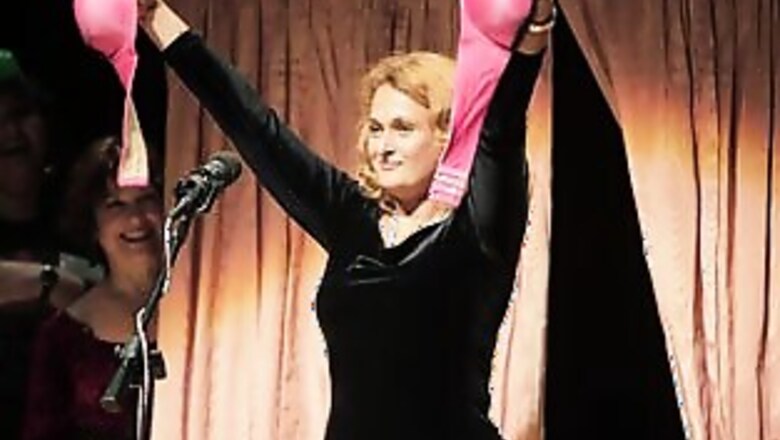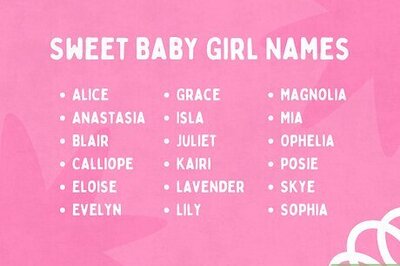
views
Boston: Can't get milk from a cow? Try calling her Bessie or Buttercup.
A pair of British researchers who found that dairy cows with names yield more milk than unnamed cows are among this year's winners of the Ig Nobel awards, the annual tribute to scientific research that on the surface seems goofy but is often surprisingly practical.
Other winners honored Thursday at Harvard University's Sanders Theater included scientists who found that empty beer bottles are much better weapons in a bar brawl than full bottles; researchers who used bacteria in panda poop to reduce kitchen waste; and in homage to the worldwide financial meltdown, the executives of four Icelandic banks who contributed to the island nation's economic collapse.
The 19th annual event with the theme "Risk," sponsored by the scientific humor magazine Annals of Improbable Research, featured real Nobel laureates handing out the prizes.
Not all the winners were so thrilled to have their science — serious business to them — singled out in such a way.
"Not the pinnacle of my academic achievements," said Stephan Bolliger, who along with four colleagues in Switzerland conducted a study that confirmed an empty beer bottle makes a better weapon than a full beer bottle in a brawl. Still, Bolliger conceded, winning an Ig Nobel was certainly "one of the most interesting or memorable moments of my professional life."
No heads were slammed in the study. Instead, Bolliger, head of the Department of Forensic Medicine at the University of Bern, Switzerland, and his team dropped steel balls on half-liter bottles.
"The empty beer bottles were much sturdier than the full ones," Bolliger said in an e-mail. "However, although the empty bottles would therefore be better clubs, both full and empty bottles suffice in breaking the human skull."
Bolliger, like most winners, emphasizes that the research has legitimate value. Lawyers and judges in court cases have asked how much damage a blow to the head with a bottle can cause, and the study could help decide future cases, he said.
Dr Elena Bodnar won for her bra that converts into a pair of gas masks — one for the wearer, the other for a friend.
It sounds silly, but Bodnar, a Ukraine native who now lives in Chicago, started her medical career studying the effects of the 1986 Chernobyl nuclear plant disaster. If people had had cheap, readily available gas masks in the first hours after the disaster, she said, they may have avoided breathing in Iodine-131, which causes radiation sickness.
The bra-turned-gas masks could have also been useful during the Sept. 11 terrorist attacks, and for women caught outside during the dust storms that recently enveloped Sydney, she said.
"You have to be prepared all the time, at any place, at any moment, and practically every woman wears a bra," she said, noting that a bra cup, no matter what size, is the perfect shape to fit over the human mouth and nose.
Her patented devices also look pretty, no different from a conventional bra, she added.
Peter Rowlinson and colleague Catherine Douglas of the University of Newcastle in England won Ig Nobels for showing that Bessie and Buttercup give more milk than cows without names.
Rowlinson explained that naming cows was just one aspect of their research that showed that when humans are nice to animals, the animals return the affection.
For their study, they petted, groomed and named one group of heifers and acted neutrally toward another group.
"Then we followed their performance once they calved the first time and entered the dairy herd, and essentially we found that their behavior in terms of entry into the parlor was improved, they were less likely to kick when they were first introduced to the milking machine and there was an improvement in milk yield," of one to two liters.
Not much for one cow, but it adds up in large herds, Rowlinson said.
Liza Shapiro co-wrote a study that explained why pregnant women are able to maintain their balance despite carrying an increasingly large load out front.
Women, it appears, have slight differences in their lumbar vertebrae that helps compensate for their changing center of gravity.
"The fact the spine is more curved in females makes it kind of easier for us to increase that curve even more in pregnancy, and not put extra stress on the bones and back muscles," said Shapiro, an anthropology professor at the University of Texas.



















Comments
0 comment